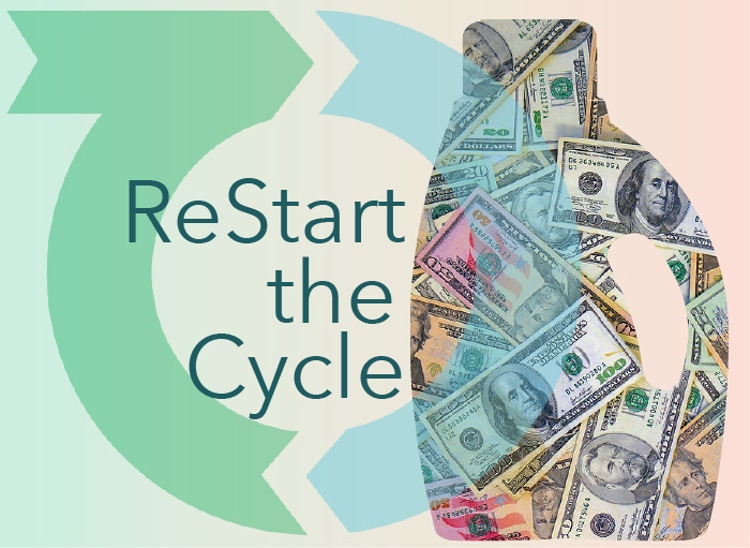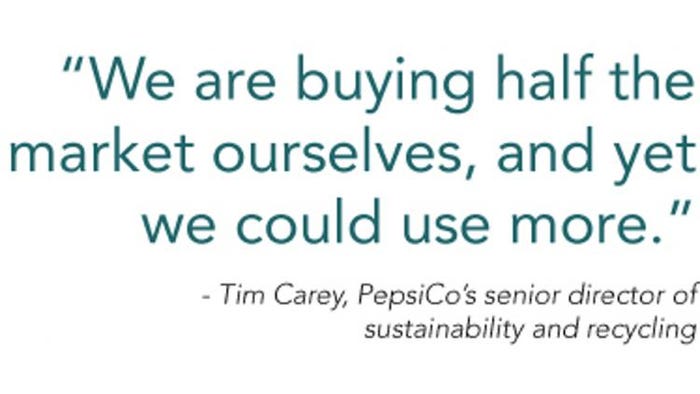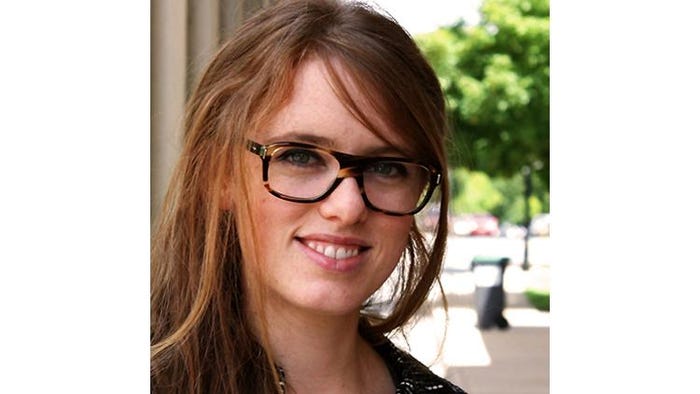Packaging recycling challenges can be overcome with economic strategy
March 8, 2016

In the past year we’ve seen an editorial frenzy over the future of recycling. Skepticism and worry are expected in any innovative and healthy American industry, but recycling has received a disproportionate dose of it lately.
Recycling rates have hit a plateau in the last few years. Data from the Environmental Protection Agency (EPA) shows that most of our recycling rates are flat, still far short of our full potential. The Ellen MacArthur Foundation estimates that there’s $80 to $120 billion (in U.S. dollars) worth of uncaptured plastic globally—that’s a 95% loss of plastics. But there are ways out of this temporary pickle, particularly if we follow the dollar. By analyzing the flow of money value throughout the recycling ecosystem, we can start to see positive opportunities emerge.
But first, what are all the challenges within recycling economics that these editorialists and industry commentators speak of?
• Well, there’s the volatility of the global commodities market—the low price of oil is making new plastic production cheaper than the price of recycled materials.
• Processors are struggling to adapt to increased processing costs due to higher volume from the growing popularity of single-stream recycling and the rise of lightweight packaging.
• Demand for American recycled materials has diminished within the international recyclables market, as embodied by the colloquial Chinese Green Fence—which has been both an opportunity and a challenge.
• Some Material Recovery Facilities (MRFs) are challenged by how to best recycle glass; sorting technologies in certain facilities are aging; and cheap landfill dumping fees in some areas make recycling appear less economically advantageous in the short term. The contracts between haulers, municipalities and MRFs, in some instances, haven’t been designed most thoughtfully; their terms and conditions, including how different material types get sold, are making it difficult for certain communities to break even.
• There’s also infrequent community education, lack of access to recycling in public spaces, and variability in consumer behavior and psychology to contend with.
• Similarly, confusion and aspirational recycling contribute to recycling stream contamination, which negatively impacts the value of recycled materials.
This is a laundry list, and it’s a swirling reality. But with those challenges come a tremendous capacity for opportunity.
The good news is that the recycling industry shrewdly understands these issues, and has plans to start capturing that $80 to $120 billion in lost value. Groups like The Recycling Partnership are organizing highly effective campaigns to expand recycling programs and improve community outreach. Charismatic, consumer-connected entities like TerraCycle are working hard to develop new recycling markets for materials that have fewer recycling opportunities, such as multilayer or flexible film plastics. The Closed Loop Fund is engaging in ambitious funding for recycling infrastructure, giving a crucial injection of capital and scalability to recycling technologies and access. The Association of Plastic Recyclers is providing guidance to companies about how they can design more recyclable packaging, as in its APR Design Guide for Plastics Recyclability. Unique groups like Southeast Recycling Development Council are helping communities optimize the profitability of their local recycling markets.
There are places, like Seattle and North Carolina, leading the charge in overcoming this plateau on a policy level. We’re seeing brands like Pepsi create a demand for more recycled materials, as Tim Carey, PepsiCo’s senior director of sustainability and recycling told The New York Times last fall: “We are buying half the market ourselves, and yet we could use more.”

This increased demand for recycled feedstock will help moderate the peaks and valleys in recycling price volatility. The Sustainable Packaging Coalition provides reports and educational courses to encourage companies’ procurement, design and engineering departments to design their packaging for recycling and also for recycled content. These initiatives all hold an enormous amount of potential to overcome this mid-2010s recycling plateau.
How2Recycle, the Sustainable Packaging Coalition’s on-package recycling label, will continue to add yet another collaborative piece to the puzzle. We are embarking on an initiative in the area we specialize in: the link between consumers and brands. We’re calling it ReStart the Cycle.
ReStart the Cycle’s goal is to get the MRFs what they need, because we believe MRFs are a pinch point in recycling economics. This belief is based on deep analysis of the challenges illuminated at the beginning of this article and by collecting data and insight from industry stakeholders. The more that MRFs can remain economically viable, the more recycling can remain economically viable.
First, How2Recycle will evolve recruitment and operations strategies to target high-value packaging. We will do this by getting the How2Recycle label on packaging categories with high value, like PET and HDPE, to encourage the general public to get back to recycling the basics. An example is our “cap calculator” tool that will measure how much money could be salvaged for communities if everyone started putting caps back on their bottles before recycling. This will, in turn, show the importance of getting the “Empty & Replace Cap” How2Recycle label on more plastic bottles.
Here is the target list of materials for ReStart the Cycle: PET bottles; HDPE bottles and jugs; metal (steel and aluminum) cans; paper and paperboard packaging, including corrugated boxes.
Second, How2Recycle seeks to visually map the system of recycling economics. Our hope is that by outlining some of the recycling industry’s economic levers and hot spots, we will be able to accurately zero in on specific remedial solutions and tools.
Third, How2Recycle will strategize and collaborate with other organizations and industry stakeholders to work on those solutions and tools.
It’s especially important for recycling industry stakeholders and brands to set their sights on collaborating and moving as a united front in the coming years. If we work together as we ReStart the Cycle, we can innovate a blazing path into the next great era of recycling.

Kelly Cramer is a project associate at GreenBlue where she works primarily within GreenBlue’s Sustainable Packaging Coalition and one of its fastest growing projects, the How2Recycle Label program. She comes to GreenBlue with a background in public interest advocacy and a J.D. in Environmental Law from Lewis & Clark Law School in Portland, OR, as well as a deep passion for writing and design.
______________________________________________________________________________
Learn about the latest developments in sustainable packaging at EastPack 2016, June 14-16, in New York City.
______________________________________________________________________________
About the Author(s)
You May Also Like


